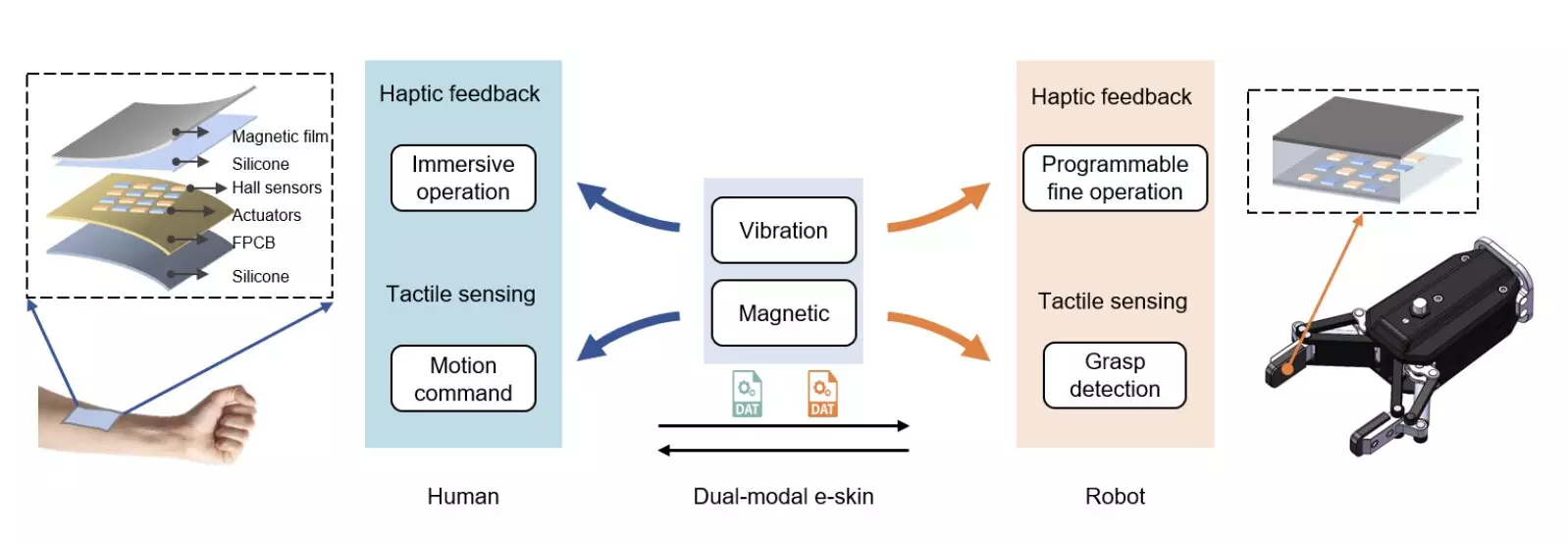The field of materials science and engineering has seen remarkable advancements in recent years, particularly in the development of innovative materials for robotic and prosthetic applications. One area of focus has been the creation of electronic skins, also known as e-skins, designed to mimic the sense of touch and interact with the surrounding environment. A recent breakthrough by researchers at Tsinghua University has led to the development of a dual-modal tactile e-skin that not only enhances the sensing capabilities of robots but also enables bidirectional touch-based human-robot interactions.
Dr. Wenbo Ding and his team set out to address the limitations of current electronic skin technology, which typically focuses on either tactile perception or tactile feedback, but not both. The dual-modal e-skin they created integrates multimodal magnetic tactile sensing with vibration feedback to achieve a seamless combination of sensing and feedback mechanisms. By using a flexible magnetic film, silicon elastomer, Hall sensor array, actuator array, and microcontroller unit, the e-skin is able to detect tactile information and provide tactile feedback in real-time.
The prototype of the dual-modal tactile e-skin was put to the test in a series of experiments, demonstrating its effectiveness in object recognition, precise weighing, and immersive human-robot interactions. The researchers found that the e-skin could control the delicate weighing process with high accuracy, meeting daily cooking and industrial weighing requirements. What sets this technology apart is its cost-effectiveness, with the total cost of the device being less than $26 and weighing less than 29 grams.
The potential applications of the dual-modal tactile e-skin are vast, ranging from advancing robotic manipulation to enabling precise control in industrial settings and contributing to the development of advanced prosthetic limbs. The research team’s future efforts will focus on miniaturizing e-skin components for broader applications, incorporating new sensing modalities such as temperature sensing, and exploring the addition of auditory feedback. These advancements have the potential to revolutionize human-computer interactions and pave the way for a new era of sensor-based technologies.
Overall, the development of dual-modal tactile e-skin technology represents a significant step forward in enhancing the capabilities of robots and prosthetic devices. By bridging the gap between tactile sensing and feedback, this innovative technology opens up a world of possibilities for improving human-robot interactions and revolutionizing various industries. The future looks promising for dual-modal e-skin technology, with exciting advancements on the horizon.


Leave a Reply